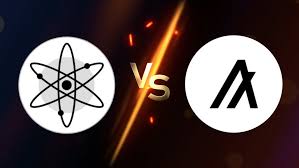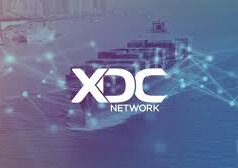The crypto world is buzzing with innovation, and two projects consistently stand out in the Layer-1 blockchain race: Algorand and Cosmos. Both are tackling big problems—scalability, interoperability, and real-world adoption—but they’re doing it in different ways. If you’re a developer, investor, or just a crypto curious soul, you’ve probably wondered which of these platforms has the edge. Let’s dive into the nitty-gritty of Algorand (ALGO) and Cosmos (ATOM), comparing their tech, vision, and potential to shape the decentralized future.
The Vision Behind the Chains
Algorand: Bridging Centralized and Decentralized Worlds
Algorand, launched in 2019 by Turing Award winner Silvio Micali, is all about making blockchain accessible to everyone—think businesses, governments, and your average Joe. Its mission is to create a fast, secure, and scalable platform that can handle everything from DeFi to tokenized assets without the complexity that scares off newcomers. Algorand’s big pitch is its “future of finance” slogan, aiming to be a bridge between traditional centralized systems (like banks) and the decentralized promise of crypto. It’s like they’re saying, “Come on, Wall Street, join the party—just without the middleman.”
Cosmos: The Internet of Blockchains
Cosmos, founded in 2017 by Jae Kwon, Zarko Milosevic, and Ethan Buchman, has a different dream: to connect all blockchains into one big, interoperable ecosystem. Dubbed the “internet of blockchains,” Cosmos wants to make it easy for different networks to talk to each other, share data, and work together. Imagine a world where Bitcoin, Ethereum, and a niche DeFi chain can swap info seamlessly—Cosmos is building the highways for that. Launched in 2019, it’s focused on giving developers the tools to create custom blockchains without reinventing the wheel.
Key Vision Comparison:
- Algorand: Simplifies blockchain for mass adoption, targeting centralized institutions and DeFi.
- Cosmos: Builds an ecosystem where blockchains interoperate, prioritizing developer freedom and connectivity.
How They Work: Tech Under the Hood
Algorand’s Pure Proof-of-Stake
Algorand uses a Pure Proof-of-Stake (PPoS) consensus mechanism, which is both energy-efficient and democratic. Unlike Bitcoin’s energy-hungry Proof-of-Work, Algorand randomly selects validators from all token holders, weighted by their stake. This makes it nearly impossible for bad actors to manipulate the system, as you’d need to control a majority of ALGO tokens—expensive and unlikely. Transactions finalize in about 5 seconds, and the network can handle thousands per second, making it a speed demon for applications like payments or NFTs.
Algorand’s standout feature is its Layer-1 smart contracts, which let developers create complex apps directly on the blockchain without needing extra layers. It also supports Algofi, a decentralized lending protocol, and Algorand Standard Assets (ASA) for easy tokenization of real-world assets like real estate or art.
Cosmos’ Tendermint and IBC
Cosmos takes a modular approach with its Tendermint Byzantine Fault Tolerance (BFT) consensus. Tendermint is a Proof-of-Stake system designed for speed and security, finalizing transactions in about 7 seconds. What sets Cosmos apart is its Inter-Blockchain Communication (IBC) protocol, which lets independent blockchains (called “zones”) connect to the Cosmos Hub. Each zone can have its own rules, tokens, and governance, but they all talk through the Hub, creating a flexible, interconnected ecosystem.
Cosmos’ SDK (Software Development Kit) is a developer’s dream, letting them build custom blockchains tailored to specific use cases, like gaming or DeFi, with minimal hassle. Recent X posts highlight Cosmos’ growing role in AI, with over 120 chains connected via IBC and projects like Elys Network adopting ATOM for staking and DeFi utility.
Tech Snapshot:
| Feature | Algorand | Cosmos |
|---|---|---|
| Consensus | Pure Proof-of-Stake (PPoS) | Tendermint BFT (PoS) |
| Transaction Speed | ~5 seconds | ~7 seconds |
| Scalability | Thousands of TPS | High, varies by zone |
| Interoperability | Limited, focused on assets | IBC connects multiple chains |
| Smart Contracts | Layer-1, user-friendly | Via SDK, customizable |
Tokenomics: ALGO vs. ATOM
Algorand’s native token, ALGO, has a hard cap of 10 billion coins, with about 6.9 billion in circulation as of September 2022. Inflation is around 5% annually but will stop by 2030 when all tokens are released, potentially making ALGO deflationary as lost wallets reduce supply. Staking rewards are modest at 5-6% APY on platforms like Ledger, and the initial distribution allocated 3 billion to circulation, 1.75 billion for rewards, and the rest for node runners and the Algorand Foundation.
ALGO’s price history shows a 3,000% surge during the 2020–2021 bull market, peaking in November 2021, but it crashed 90% in the following bear market. As of August 2025, ALGO trades around $0.20, with a market cap of $1.65 billion.
Cosmos’ Inflationary Model
Cosmos’ ATOM has no max supply, with about 292.6 million tokens in circulation as of September 2022. Its inflation rate fluctuates between 7-20% to encourage staking (targeting 66% of tokens staked). Staking rewards are higher, at 8-10% APY on Ledger, and up to 22% on some platforms, making ATOM attractive for passive income. The initial distribution gave 20% to founding companies and 80% to investors.
ATOM outperformed ALGO historically, with a 4,200% gain in the 2020–2021 bull run and a milder 67% drop in the bear market. As of August 2025, ATOM trades around $4.42, with a market cap of $1.68 billion.
Tokenomics Comparison:
| Metric | Algorand (ALGO) | Cosmos (ATOM) |
|---|---|---|
| Max Supply | 10 billion | None |
| Circulating Supply | 6.9 billion | 292.6 million |
| Inflation | ~5%, stops by 2030 | 7-20%, dynamic |
| Staking APY | 5-6% | 8-10% (up to 22%) |
| Market Cap (2025) | $1.65 billion | $1.68 billion |
Use Cases and Ecosystem Growth
Algorand’s Real-World PushAlgorand’s ecosystem is geared toward practical applications. With 474 applications as of September 2022, it’s hosting projects like Lofty (real estate tokenization) and Niftgen (NFT platforms). Its focus on user-friendly smart contracts and fast transactions makes it ideal for:
- DeFi: Algofi supports peer-to-peer lending and stablecoin stabilization.
- NFTs: Platforms like Niftgen are building creator economies.
- Centralized Partnerships: Algorand works with governments and institutions, like El Salvador’s blockchain initiatives, to bring DeFi to the masses.
Silvio Micali’s credentials and Algorand’s focus on bridging CeFi and DeFi give it credibility with traditional players.
Cosmos’ Interconnected Universe
Cosmos’ ecosystem, with 262 applications in 2022, is smaller but growing fast, especially in AI and DeFi. Recent X posts highlight projects like Elys Network using ATOM for staking and liquidity pools. Cosmos shines in:
- Interoperability: IBC connects over 120 chains, including Binance Chain and Crypto.com.
- Custom Blockchains: The Cosmos SDK powers chains like Terra (pre-collapse) and Berachain.
- AI Infrastructure: Projects are leveraging Cosmos for cross-chain AI solutions.
Cosmos’ decentralized ethos, as noted on X, avoids reliance on a single organization, fostering a bottom-up community.
Investment Potential: Which Is the Better Bet?
Algorand’s Case
Algorand’s low price ($0.20) and fixed supply make it appealing for investors betting on long-term growth. Its partnerships with centralized entities and focus on user-friendly tech could drive adoption. However, its higher volatility (65% bearish sentiment) and lower staking returns compared to ATOM suggest it’s riskier for short-term gains.
Cosmos’ Case
Cosmos’ higher staking rewards (up to 22% APY) and historical outperformance (4.6x better than ALGO from 2020–2022) make it a stronger choice for passive income and stability. Its interoperability vision could position it as a backbone for the crypto ecosystem, but its inflationary model might deter some investors.
Investment Considerations:
- Algorand: Better for speculative, long-term bets due to low price and CeFi-DeFi bridge.
- Cosmos: Safer for steady returns via staking and exposure to interoperability trends.
Challenges and Criticisms
Algorand’s user experience can feel less intuitive, and its reliance on centralized partnerships raises questions about true decentralization. Cosmos, meanwhile, faces a steeper learning curve for users navigating its multi-chain ecosystem, as noted in X posts. Some also argue Cosmos lacks the marketing heft of competitors like Avalanche.
The Road Ahead: Who Wins?
Both Algorand and Cosmos are pushing the boundaries of blockchain tech, but they cater to different audiences. Algorand’s strength lies in its simplicity and appeal to traditional finance, making it a contender for mass adoption. Cosmos, with its interoperability focus, could become the glue that holds the crypto world together. Your choice depends on what you value:
- Pick Algorand if you believe in bridging CeFi and DeFi or want a cheaper entry point.
- Pick Cosmos if you’re betting on a connected blockchain future or prioritize staking rewards.
As the crypto space evolves, both projects have bright futures, but neither is without risks. Keep an eye on Algorand’s partnerships and Cosmos’ IBC adoption—they’ll likely decide who comes out on top.
Sources:
- Solberg Invest, “Cosmos vs Algorand: Which Is The Better Investment?” September 16, 2022.
- Securities.io, “Cosmos Vs. Algorand – What’s the Difference?” August 14, 2023.
- Godex.io, “ATOM vs ALGO Comparison,” 2025.
- @santiagoroel, December 20, 2023.
- @Cryptocito, October 27, 2023.
- @cosmos, February 7, 2025.
- @cosmos, May 20, 2025.



























